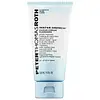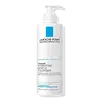Peter Thomas Roth Water Drench® Cloud Cream Cleanser Versus La Roche-Posay Toleriane Hydrating Gentle Cleanser
What's inside
What's inside
 Key Ingredients
Key Ingredients

 Benefits
Benefits

 Concerns
Concerns

 Ingredients Side-by-side
Ingredients Side-by-side

Sodium Cocoyl Isethionate
CleansingGlycerin
HumectantGlyceryl Stearate Se
EmulsifyingStearic Acid
CleansingCoconut Acid
CleansingCetearyl Alcohol
EmollientCocos Nucifera Oil
MaskingSodium Caproyl Methyltaurate
CleansingDisodium Cocoamphodiacetate
CleansingPolyglyceryl-10 Myristate
Skin ConditioningSodium Methyl Stearoyl Taurate
CleansingSodium Hyaluronate
HumectantAlthaea Officinalis Root Extract
Skin ConditioningSambucus Nigra Fruit Extract
AstringentSodium PCA
HumectantGlycol Distearate
EmollientSodium Chloride
MaskingSodium Isethionate
CleansingXanthan Gum
EmulsifyingPropylene Glycol
HumectantSodium Hydroxide
BufferingTetrasodium EDTA
Mica
Cosmetic ColorantPotassium Sorbate
PreservativeSodium Benzoate
MaskingEthylhexylglycerin
Skin ConditioningPhenoxyethanol
PreservativeSodium Cocoyl Isethionate, Glycerin, Glyceryl Stearate Se, Stearic Acid, Coconut Acid, Cetearyl Alcohol, Cocos Nucifera Oil, Sodium Caproyl Methyltaurate, Disodium Cocoamphodiacetate, Polyglyceryl-10 Myristate, Sodium Methyl Stearoyl Taurate, Sodium Hyaluronate, Althaea Officinalis Root Extract, Sambucus Nigra Fruit Extract, Sodium PCA, Glycol Distearate, Sodium Chloride, Sodium Isethionate, Xanthan Gum, Propylene Glycol, Sodium Hydroxide, Tetrasodium EDTA, Mica, Potassium Sorbate, Sodium Benzoate, Ethylhexylglycerin, Phenoxyethanol
 Reviews
Reviews

Ingredients Explained
These ingredients are found in both products.
Ingredients higher up in an ingredient list are typically present in a larger amount.
Glycerin is already naturally found in your skin. It helps moisturize and protect your skin.
A study from 2016 found glycerin to be more effective as a humectant than AHAs and hyaluronic acid.
As a humectant, it helps the skin stay hydrated by pulling moisture to your skin. The low molecular weight of glycerin allows it to pull moisture into the deeper layers of your skin.
Hydrated skin improves your skin barrier; Your skin barrier helps protect against irritants and bacteria.
Glycerin has also been found to have antimicrobial and antiviral properties. Due to these properties, glycerin is often used in wound and burn treatments.
In cosmetics, glycerin is usually derived from plants such as soybean or palm. However, it can also be sourced from animals, such as tallow or animal fat.
This ingredient is organic, colorless, odorless, and non-toxic.
Glycerin is the name for this ingredient in American English. British English uses Glycerol/Glycerine.
Learn more about GlycerinPropylene Glycol is an odorless, colorless liquid. As a humectant, it helps skin retain moisture. It also aids in delivering active ingredients.
Another role of this ingredient is preventing a product from melting or freezing. Propylene glycol also adds antimicrobrial properties to a product, elongating product lifespan.
This ingredient is considered an organic alcohol and commonly added into both cosmetics and foods.
Those with sensitive skin or conditions may develop a rash when using this ingredient.
Learn more about Propylene GlycolChances are, you eat sodium chloride every day. Sodium Chloride is also known as table salt.
This ingredient has many purposes in skincare: thickener, emulsifier, and exfoliator.
You'll most likely find this ingredient in cleansers where it is used to create a gel-like texture. As an emulsifier, it also prevents ingredients from separating.
There is much debate on whether this ingredient is comedogenic. The short answer - comedogenic ratings don't tell the whole story. Learn more about comegodenic ratings here.
The concensus about this ingredient causing acne seems to be divided. Research is needed to understand if this ingredient does cause acne.
Scrubs may use salt as the primary exfoliating ingredient.
Learn more about Sodium Chloride